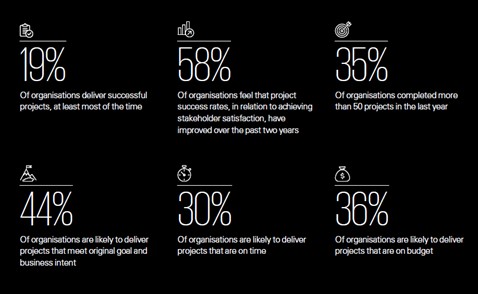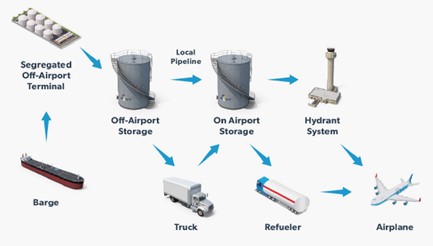Project Cost Estimating Process vs the NASA Cost Estimating Process – a Process Benchmarking Study
FEATURED PAPER
By Femto Nur Pratama
West Java, Indonesia
ABSTRACT
The Cost Estimating Process is an important phase in project execution. Research shows that only a few projects were on budget in their delivery. Poor estimation during the project’s planning phase is also one of the largest contributors to project failures. Hence, the importance of a reliable estimate of the project budget becomes very high for future projects. In this study, a process benchmarking analysis has been conducted to several Cost Estimating Best Practices and Guidelines against the NASA Cost Estimating Process using a combination of Dominance, Disjunctive Reasoning, and Additive Weighting Technique of Multi-Attributes Decision Making. The analysis result shows that the NASA Cost Estimating Process was the best alternative among other Cost Estimating Best Practices and Guidelines. The best alternative will be adapted for future projects’ cost estimating process, with these three activities as priorities to be subject of improvement; (1) Develop and Incorporate the Cost Risk Assessment, (2) Update the Cost Estimate as Required, and (3) Document the Estimate.
Key Words: Cost Estimate, National Aeronautics and Space Administration (NASA), Cost Estimating Process, Benchmarking
INTRODUCTION
The research from KPMG, AIPM, and IPMA in 2019[1] mentioned that only 19% of organizations deliver a successful project. This number shows that the likelihood of achieving OTOBOSOR (On Time On Budget On Schedule On Return) criteria is a difficult task, primarily when project complexity always increased each year with technology development. Based on the same research, only 36% of the project was on the budget in their delivery. This data shows that most of the time, inadequate cost estimating on a project leads to project failure. Naybour’s study (2015)[2] also stated that the PwC report on Insights and Trends: Current Portfolio, Programme and Project Management Practices found that inadequate estimation during the planning phase continues to be the largest contributor to project failures.

Figure-1 Key Findings from KPMG, AIPM and IPMA Project Management Survey 20191
The Aviation Fuel Facilities Projects
Aviation Fuels was one of the leading products of Indonesia’s state-owned Oil and Gas Company Downstream Business. The Company distributes Aviation Fuels to more than 50 airports in Indonesia and South East Asia. To maintain the quality and security of the supply of Aviation Fuel, Company already built several infrastructure facilities for Aviation Fuel Products throughout the country. The facilities had to support these three primary operations; Receiving, Storage, and Distribution.

Figure-2 Supply Chain of Aviation Fuel from Segregated off-airport terminal to airplane[3]
The Downstream Aviation Fuel Business Process started from a segregated off-airport terminal. This terminal receives various hydrocarbon products such as Gasoline, Gasoil, Heavy Oil, and Aviation Fuel (Jet Fuel and Aviation Gasoline) via Offshore or Onshore Oil Tanker berthing facilities from local or overseas refineries. Each product is stored in each specific Storage Tank. From these storage tanks, the Aviation Fuel will be transferred to On Airport Aviation Fuel Facilities. The transportation of the products often uses two methods. In the first method, Transfer Pump transported the product directly via Pipeline Facilities from Off-Airport Storage Tanks to On-Airport Storage Tanks. If a Pipeline were not available in the area, a bridger truck would transfer the products to the On-Airport Storage Tanks. The fuel is then transferred to the aircraft using hydrant system facilities (piping and pumping system from tanks directly to the airside below aircraft parking stand). And for the lower traffic airports, pump-equipped Refueler Truck is often used as alternatives to transfer the fuel to the aircraft.
More…
To read entire paper, click here
How to cite this paper: Pratama, F.N. (2020). Indonesia Aviation Fuel Facilities Project Cost Estimating Process vs the NASA Cost Estimating Process – a Process Benchmarking Study; PM World Journal, Vol. X, Issue I, January. Available online at https://pmworldlibrary.net/wp-content/uploads/2021/01/pmwj101-Jan2021-Pratama-Indonesia-aviation-fuel-facilities-project-cost-estimate.pdf
About the Author

Femto Nur Pratama
West Java, Indonesia
![]()
Femto Nur Pratama is a project engineer with seven years of professional experience in the oil and gas sectors. Currently, he works as an engineer at Infrastructure Management & Project Department of Indonesia’s national oil company. During his career, he has an experience as an Instrument Engineer, Cost Estimator, Project Engineer, and he has been involved in several projects including LNG Onshore Receiving Facilities & Offtake Station, LNG Regasification Plant, Fuel Terminal, Pipeline, and Aviation Fuel Supply Facilities. He holds a bachelor’s degree in Electronics and Instrumentation from Gadjah Mada University (UGM). He is attending a distance learning mentoring course under the tutorage of Dr. Paul D. Giammalvo, CDT, CCE, MScPM, MRICS, GPM-m Senior Technical Advisor, PT Mitrata Citragraha, to attain Certified Cost Professional certification from AACE International.
Femto lives in West Java, Indonesia, and can be contacted at fnpratama@gmail.com
[1] KMPG, AIPM, IPMA (2019). The Future of Project Management : Global Outlook 2019. Retrieved from https://www.ipma.world/assets/PM-Survey-FullReport-2019-FINAL.pdf
[2] Naybour, Paul (2015). Projects Fail Because of Poor Estimates in the Planning Phase. https://www.parallelprojecttraining.com/why-projects-fail-poor-estimates-planning-phase/
[3] Airlines for America (2018). Jet Fuel : From Well to Wing. https://www.airlines.org/wp-content/uploads/2018/01/jet-fuel-1.pdf









